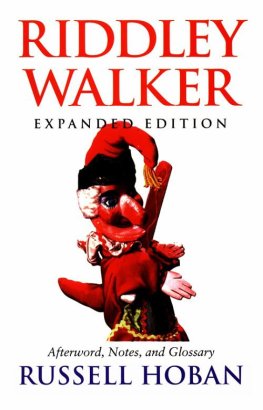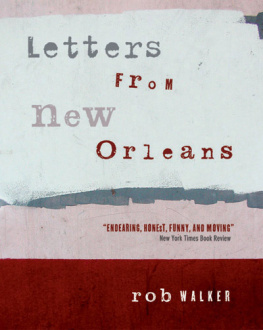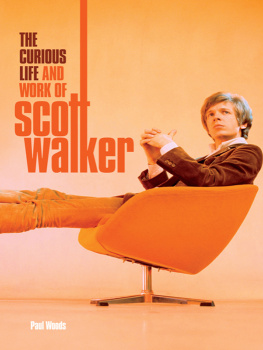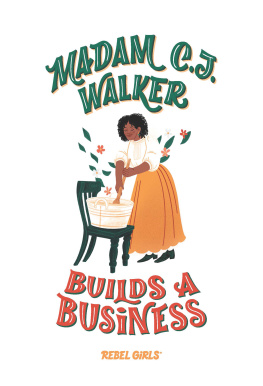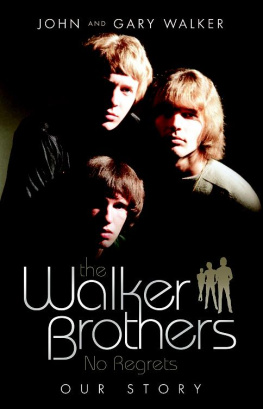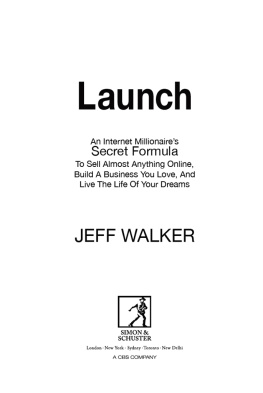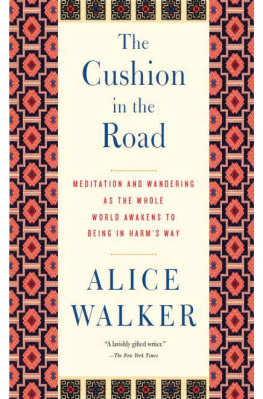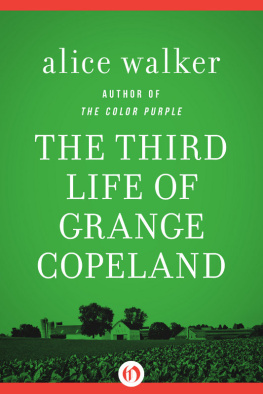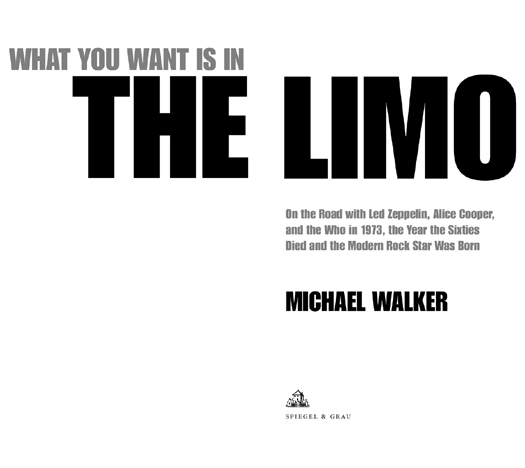
What You Want Is in the Limo is a work of nonfiction.
Some names and identifying details have been changed.
Copyright 2013 by Michael Walker
All rights reserved.
Published in the United States by Spiegel & Grau, an imprint of The Random House Publishing Group, a division of Random House, Inc., New York.
S PIEGEL & G RAU and Design is a registered trademark of Random House, Inc.
Library of Congress Cataloging-in-Publication Data
Walker, Michael.
What you want is in the limo : on the road with Led Zeppelin, Alice Cooper, and the Who in 1973, the year the sixties died and the modern rock star was born / Michael Walker.
pages cm
Includes blbliographical references.
eISBN: 978-0-679-64415-6
1. Concert tours. 2. Led Zeppelin (Musical group) 3. Who (Musical group) 4. Alice Cooper (Musical group) 5. Rock music19711980History and criticism. I. Title.
ML3534.W286 2013
781.6609047dc23
2013009095
www.spiegelandgrau.com
Jacket design: Evan Gaffney
Jacket photograph: Bob Gruen
v3.1
CONTENTS
INTRODUCTION
In 1973, three legendary bands embark upon tours of North America.
Led Zeppelin, the Who, and Alice Cooper already rule the eight-track players in high school parking lots across America. Each bands previous album sold more than one million copies in the United States; each band is still endowed with its original lineup. And although they dont know it, in 1973 each has just released a career-defining album that will turn out to be a commercial and creative watershed: Zeppelins Houses of the Holy, the Whos Quadrophenia, and Coopers Billion Dollar Babies.
What the bands also cant know is that their 1973 tours in support of these albums, which will collectively touch nearly every metropolitan area in the United States and Canada, represent the apogee for a certain type of rock stardom that has been buildingindeed, that each of these bands has helped to buildwhich the world has not seen since and probably never will again.
Subsequent generations of rock musicians will literally kill themselves trying to emulate the example set in 1973, be it the attendance records smashed, the quantity and quality of drugs, the booze and groupies harvested, the hotel rooms and vital organs ravaged ormost elusivethe evanescent aesthetic and sexual heat generated. Why? Because, in this brief and shining moment in 1973, modern rock stardom is born.
This is not to be confused with rock and roll stardom as defined by Elvis and Chuck Berry in the 1950s or by the Beatles in the 1960s. The rock star of 1973 is a new animal in every respectboth creator and beneficiary of a post-Beatles, pre-MTV, what-you-want-is-in-the-limo, halter-topped, lude-dropping, coke-and-glitter-flecked Midwestern-arena-backstage-blowjob shindig. The template created in 1973 will, three years later, metastasize into mega-albums by Peter Frampton and Fleetwood Mac and, in the eighties and nineties, tours upsized from civic arenas to Jumbotronned stadia and records shipped in the tens of millionsthough by then the rituals, commodified by corporate patronage, will seem increasingly scripted. But while it lasts, the Spirit of 73 burns hot, blue, and righteousthe title of a ZZ Top classic released that summerthroughout rock and the culture beyond.
How did this moment, so estranged from the rock culture of the 1960s, arrive only four years after the supposed hippie pastoral of Woodstock? How did rock go from Beatles in tab-collar suits and fans throwing jelly babies to Led Zeppelin careering through the provinces by limo and private jet trailed bygood morning, little schoolgirl!feral fourteen-year-olds with fake IDs? How do the same musicians who once espoused, or pretended to espouse, tie-dyed collectivism suddenly conjure a backstage culture more Weimar Berlin than Woodstock Nation? And what does this say about the popular culture of those times? Or the fact that forty years later it still makes us wonder?
The sixties created an outsize hunger for rock culture but lacked the infrastructure to deliver it; in 1973 supply finally catches up with demand. As the sixties bled into the seventies, the nave counterculturalism that bound rock bands in generational solidarity to their audience began to fray. A new generation of fans too young for Woodstock inherited the tropes of the sixties minus the boring poli-sci socio-overlay. Thus do peace, love, and understanding devolve into sex, drugs, and rock and rollthe sex being younger, the drugs harder, and the rock and roll louder, longer, and infinitely more belligerent.
By 1973, largely on the strength of this new demographic, the Who, Alice Cooper, and especially Led Zeppelin are outselling the Beatles (who disbanded three years earlier) and the Rolling Stones, who toured the year before and upped the ante considerably in regard to on-the-road outrage. The Sixties, as they are already sentimentalized, are finally over, replaced by an altogether colder and more cynical epoch: by 1973, the United States is in the grip of crippling inflation and an unrelenting energy crisis; Richard Nixon, inaugurated in January and in danger of impeachment by December, famously asserts he is not a crook; Bonanza is canceled.
In the midst of this, the money suddenly pouring into the record industrys coffers confers upon rock bands the status of young princes. In the sixties, a convincing show of empathy with the rank-and-file audience was compulsory; the newly flush rockers of the early 1970s dispense with the charade and start behaving like, well, stars. Not for them the aw-shucks of Elvis, the cheek and charm of the Beatles, however feigned; no, they are rock starsa taxonomy and work in progress that manifests in limos and Learjets and contract riders specifying vintage cognacs, which in turn feed a galloping sense of entitlement that breeds contempt for anyone not in the inner sanctum.
Backstage depravity in the sixties was carried out with a modicum of discretion; now it is in the open. Groupies who once pursued a single performer and became his road wife now willingly trade down to group sex, fetishism, whippings, zoophiliawhatever the boys fancy. Several are immortalized in song. Connie Hamzy of Little Rockthe sweet, sweet Connie of Grand Funk Railroads number one 1973 single Were an American Band, itself a manifesto for the new party-down rock starmakes it clear that she will do pretty much anything and apparently does with everybody from Grand Funks Mark Farner to Peter Frampton and, twenty years later, then-governor William Jefferson Clinton, whom she accuses of propositioning her.
Into this supercharged atmosphere Led Zeppelin, Alice Cooper, and the Who launch the most ambitious tours of their careers. It is a measure of the times that the bands emerge from these voyages utterly changed. Following its 73 tour, Led Zeppelin retreats from the road for a year and a half and1975s semicelebrated Physical Graffiti notwithstandingspends the rest of the seventies in a creative funk interspersed with personal calamities that stoke rumors that the band is cursed before its drummer, John Bonham, dies in his sleep after downing forty ounces of vodka before and during rehearsals for a comeback tour. Emotionally and creatively spent, Alice Cooper disintegrate at the peak of their success within months of playing their last gig of 1973, on New Years Eve in Buffalo. The Who never revisit the creative muse of Quadrophenia on record or onstage and exit the decade after a pair of desultory albums that culminate in drummer Keith Moons death by overdose of the drug weaning him from alcohol and the tragedy of eleven fans trampled to death in a stampede at a Who concert in Cincinnati.








